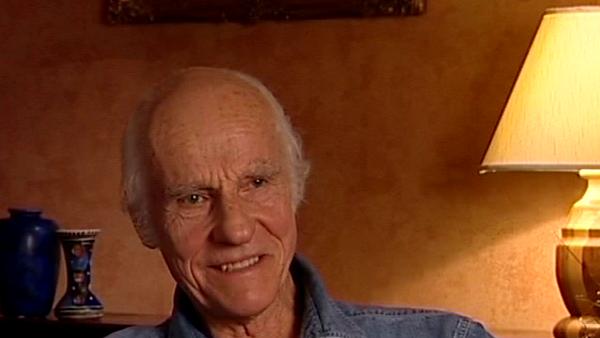NEXT STORY

Dreamchild: the darkroom scene
RELATED STORIES

NEXT STORY

Dreamchild: the darkroom scene
RELATED STORIES


|
Views | Duration | |
|---|---|---|---|
| 131. My vision for Dreamchild | 49 | 05:39 | |
| 132. Coral Browne: A very elegant lady | 59 | 00:54 | |
| 133. The challenge of the opening sequence to Dreamchild | 46 | 03:46 | |
| 134. How we created the magical first scene of Dreamchild | 31 | 01:20 | |
| 135. Set and locations within Dreamchild | 34 | 02:40 | |
| 136. Dreamchild: the darkroom scene | 42 | 02:36 | |
| 137. Eleni: the true story | 53 | 03:03 | |
| 138. My lens work with the church scene in Eleni | 35 | 03:26 | |
| 139. Collaborating with Peter Yates on Eleni | 31 | 02:17 | |
| 140. Creating a storm for The Manhattan Project | 58 | 03:13 |


The other sets that we built, we built the whole of the deck of the ocean liner, the promenade deck, to scale and we used wind machines and we had various scenes when we were supposed to be sailing into New York on the ocean liner, with the wind blowing and this was intercut with actual footage of a ship arriving into New York, probably around the 1940s. Well, of course, the colour quality was so different; this was what... something that troubled me, that all the library material that we got of the ship arriving in New York was old material which we had to try and match to our original shooting, but didn't really come off and then, because we needed the New York harbour when they come off the Berengaria — there are scenes on the quayside and in the customs sheds where Coral Browne, with her companion, comes off the ship — we went to Liverpool, because Liverpool has got a lot of Art Deco architecture and by putting the camera inside a booth and shooting through a glass with a painted glass top, we were able to sort of recreate the skyline of New York and with foreground period vehicles, make it look as if it was 1930s. And then we did other shots in... in Liverpool with a... a gangplank and somebody standing, you know, against a rail and going out, you know, as if you were, going out to sea, so we faked the whole thing of being on an ocean liner without actually going on a ship, and it worked, it worked really well, the audience would never know that we hadn't sailed to New York; we never... and of course, we never went there. But there's a lot of lovely Art Deco architecture here in London; the Park Lane Hotel we used; there's a beautiful ballroom there which is pure Art Deco, and we filmed in there and did a ballroom scene that was supposed to be on the ship. And then we went to Oxford, where little Alice was born, and we shot in the garden of the Dean's house, scenes on... on a lawn with the girls playing croquet, scenes in the library, and then we intercut that with interior sets in the studio.
Billy Williams, London-born cinematographer Billy Williams gained his first two Oscar nominations for the acclaimed “Women in Love” and “On Golden Pond”. His third nomination, which was successful, was for the epic “Gandhi”. He was President of the British Society of Cinematographers, and was awarded the Camera Image Festival’s Lifetime Achievement Award in 2000.
Title: Set and locations within "Dreamchild"
Listeners: Neil Binney
Neil Binney began working as a 'clapper boy' in 1946 on spin-off films from steam radio such as "Dick Barton". Between 1948-1950 he served as a Royal Air Force photographer. From 1950 he was a Technicolor assistant technician working on films such as John Ford's "Mogambo" (photographed by Freddie Young), Hitchcock's "The Man Who Knew Too Much" (Bob Burke), and Visconti's "Senso" (G.R. Aldo/B. Cracker). As a camera assistant he worked on "Mind Benders", "Billy Liar" and "This Sporting Life". Niel Binney became a camera operator in 1963 and worked with, among others, Jack Cardiff, Fred Tammes and Billy Williams. He was elected associate member of the British Society of Cinematographers in 1981 and his most recent credits include "A Fish Called Wanda" and "Fierce Creatures".
Duration: 2 minutes, 41 seconds
Date story recorded: September 2003
Date story went live: 24 January 2008